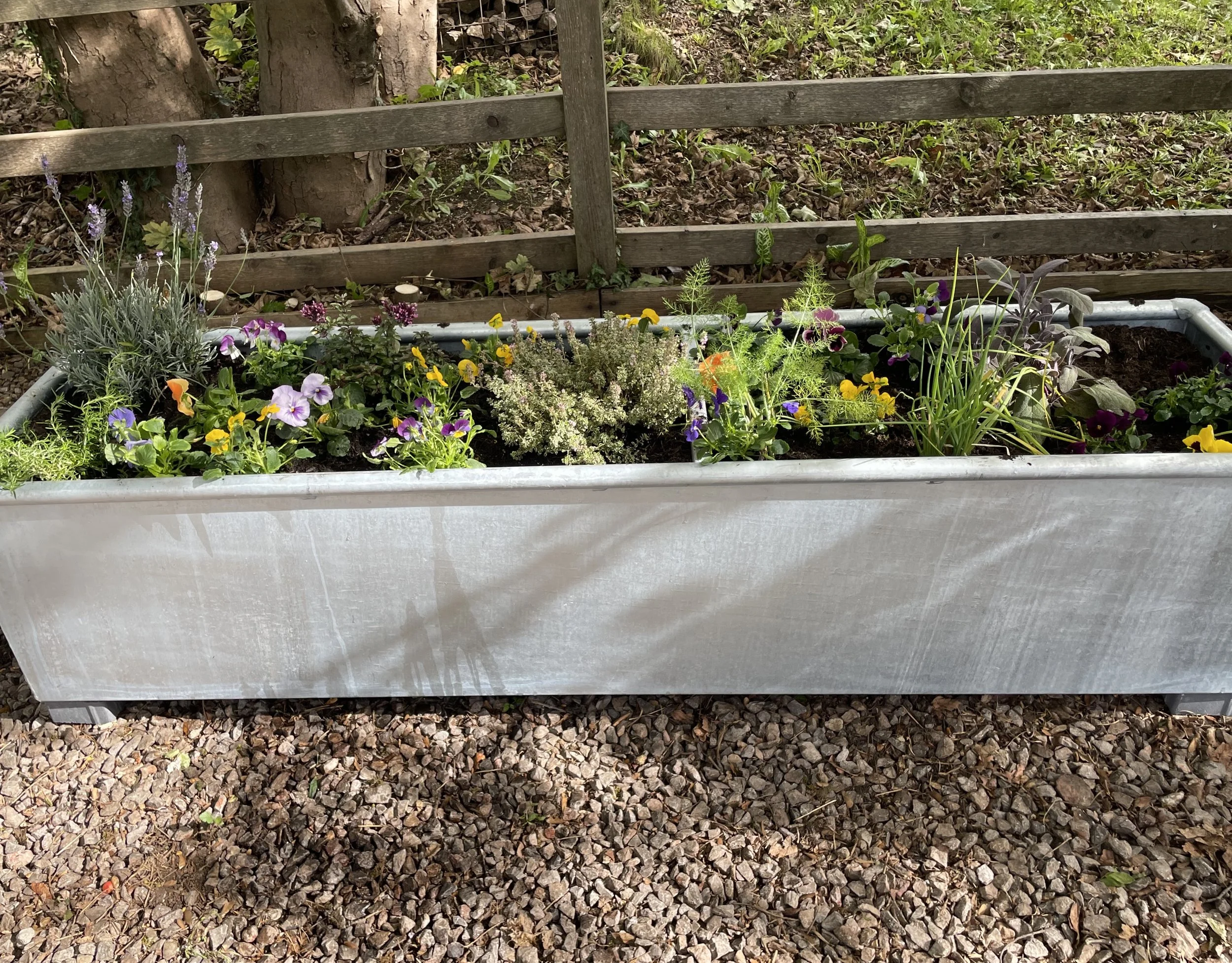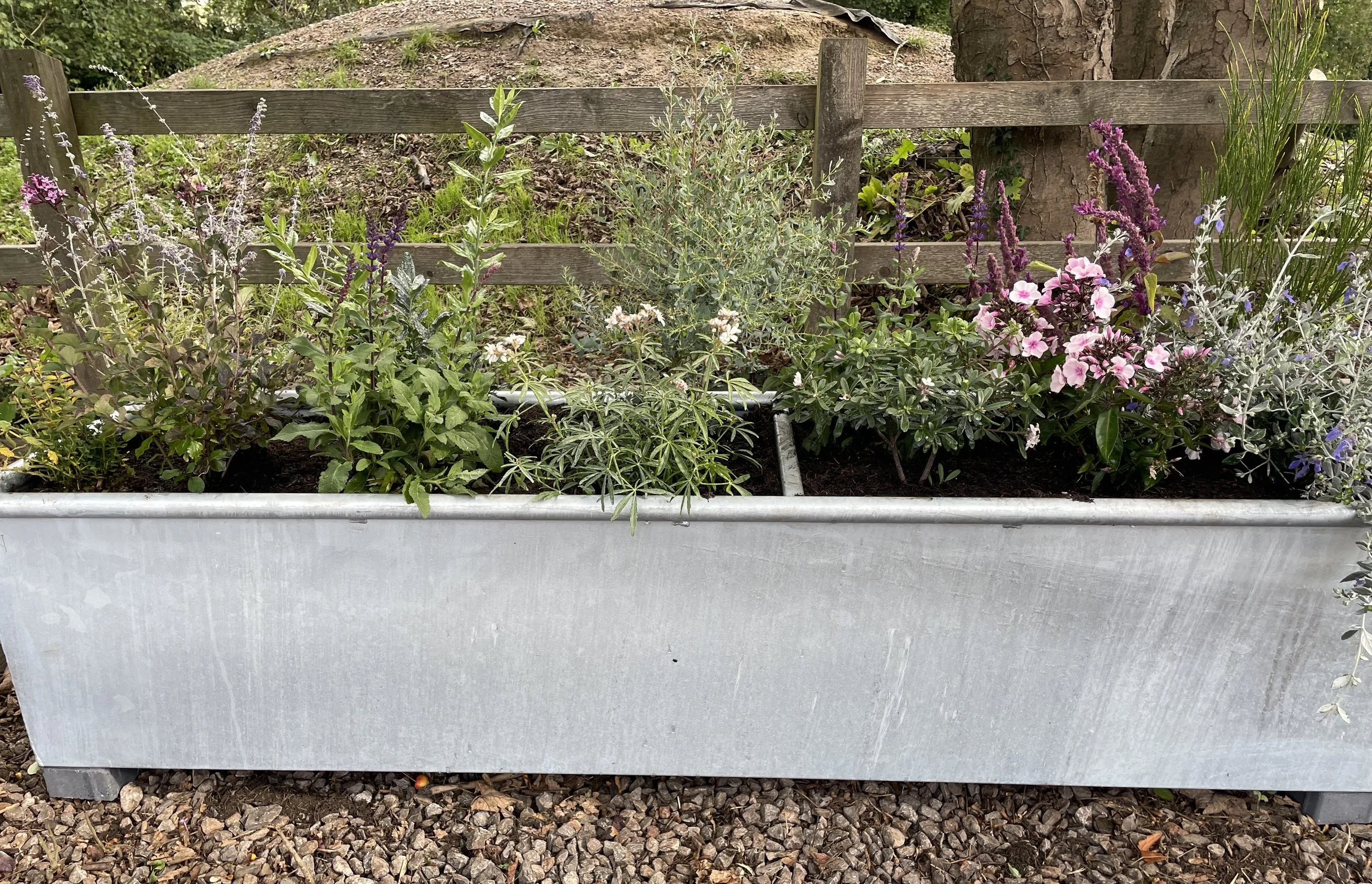
Sight
Sight is one of the most complex senses. The eyes and brain work in tandem with nerves to process depth, light, colour and imagery. Sight is another way of taking in data to inform how we perceive the world to make decisions about our environment, our movement, and our social interactions.
People see the world in different ways. Depending on whether you have conditions of sight loss like blindness, or colour blindness, cataracts or something else, we have designed this trough to look at good, strong colour contrast so it can be seen by all types of eyes. We think many people will love it because they will be able to see its strong colours, especially the bees!
Starting from the back we have the Sunhat flower known as Rudbeckia. If you have a look at the middle, it has the most wonderful pattern. We then have Astrantia (major Claret) that grows in lots of different conditions, shade and sun, and is made up of lots of different little flowers that make it look like a pin cushion. Another friend of the pollinators is Geum (Lady Strathenden) which is one of the first things to flower and last to stop flowering in traditional English borders. They keep on flushing all the way through to late September.
The underplanting in this trough is to help feed pollinators all year round and continuing on the theme of contrasts, it consists of three types of tulips (Queen of the Night, Purissima and Snakes Head Fritillary) as well as Narcissus Phesant’s eye, the very fragile Anenome Bordeux, and Allium purple sensation which have fantastic seed heads and are strongly scented.
We also have Salvia Caradonna to feed the bees as it keeps flowering and flowering as long as it is regularly dead headed and we also have two Coreopsis (Corleone Gold) with their lovely yellow flower heads as this bed is designed to be symmetrical as our eyes like balance. We also have a special little plant in the middle called Salvia Jamensis Hot Lips that does a very strange thing. When it first starts flowering in late spring, the flowers are completely red, then they go white and red, and again in mid summer, when it’s hotter, they go completely white, and then return back to red and white in autumn before turning completely red again before the winter frost comes. And finally, we have Heuchera which has brilliant little flowers for our pollinator friends and a lovely deep red leaf.
Sight
Sight is one of the most complex senses. The eyes and brain work in tandem with nerves to process depth, light, colour and imagery. Sight is another way of taking in data to inform how we perceive the world to make decisions about our environment, our movement, and our social interactions.
Sound
The sense of sound is possibly one of our more complex senses and operates largely on vibrations. Not the Om kind, but through our body’s ability to interpret sound waves through the ear and our nervous system operated by, you guessed it, our brains! There are very tiny bones in the middle of the ear that help not only to hear, but also to keep our equilibrium, our balance, and to help us maintain awareness of our environment as well as communicate.
Taste
The sense of taste is specific to the sensation detected by our taste buds of the five basic tastes of sweet, sour, salty, bitter and umami. Taste is important because it allows us to determine if food is safe to eat. Also, maybe less true in today’s world of fast and overly processed food, it has historically enabled us to distinguish whether something is nutritious and will provide our bodies with the sustenance it requires to thrive.
Smell
The sense of smell is powerful – some say the most powerful sense we have as it is strongly linked to our emotions and memory. It works by detecting odours that are picked up by tiny sensory cells in your mouth and nose. Your brain then interprets the incoming data and links it to hazards, memories, emotions, food and many other things.
Touch
Touch allows us to perceive the world through direct skin contact that delivers information to the brain such as pain, pressure and vibration. These notifications allow us to make choices about our emotions and safety. Touch enables us to interact with our environment and develop emotional bonds. Our nerves in the skin are connected to proprioceptors in our muscles and joints which enable us to maintain body awareness that allows for mobility and coordination. The earliest days of our human cognitive and emotional development are based on sensing the world through touch.




